PHOTOGRAPHY IS ALL WE NEED - PHOTOGRAPHY IS NEVER ENOUGH

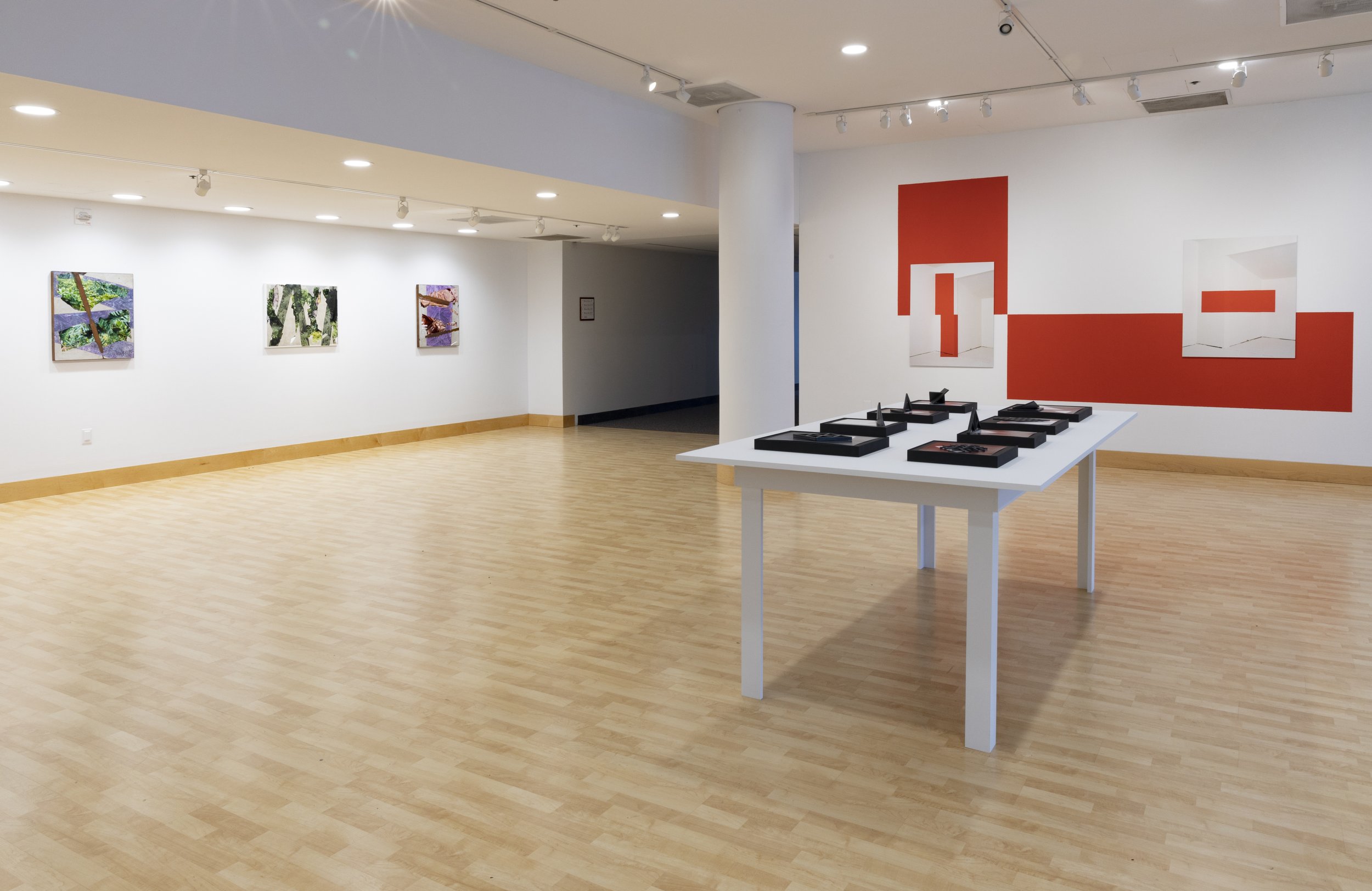
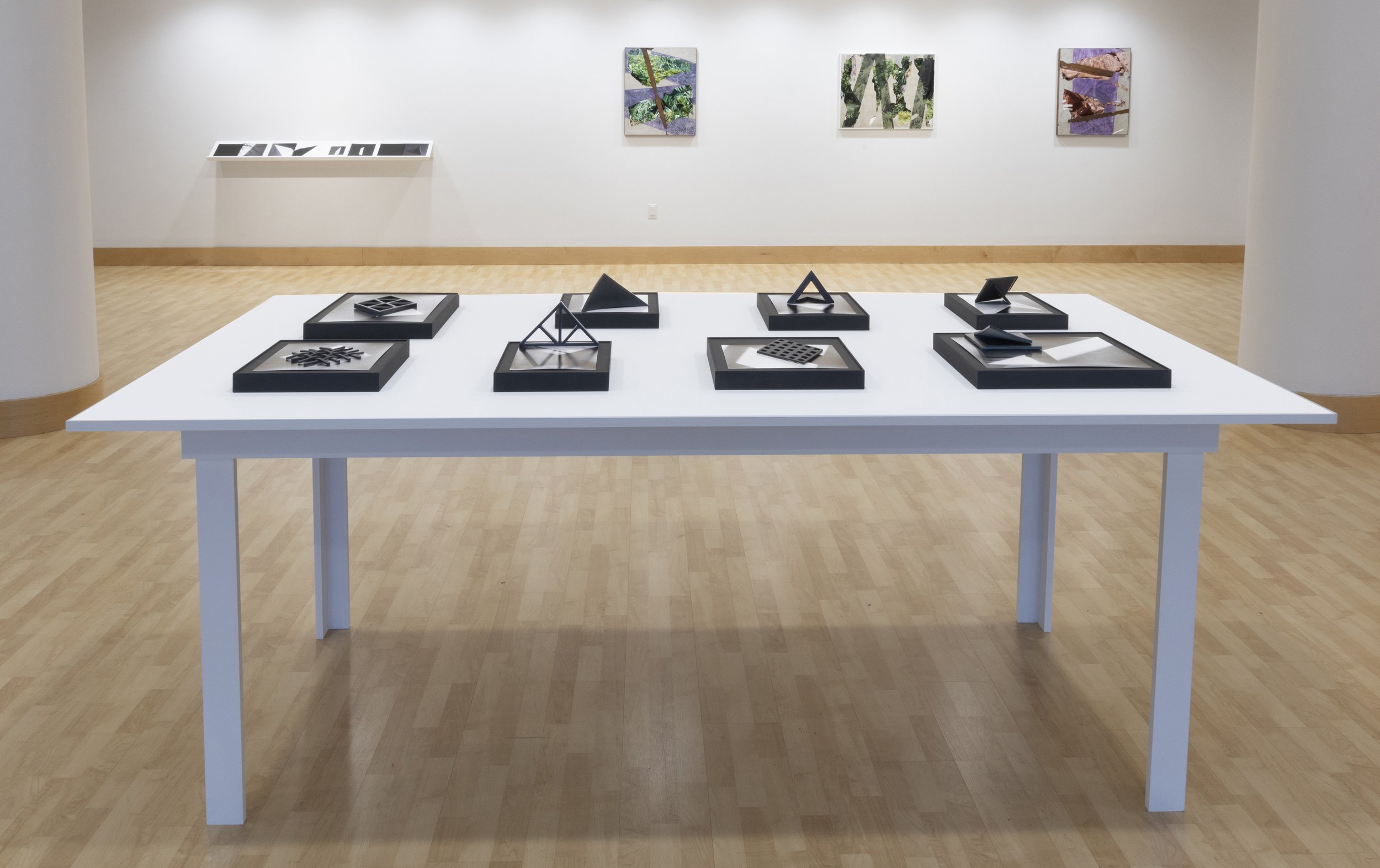
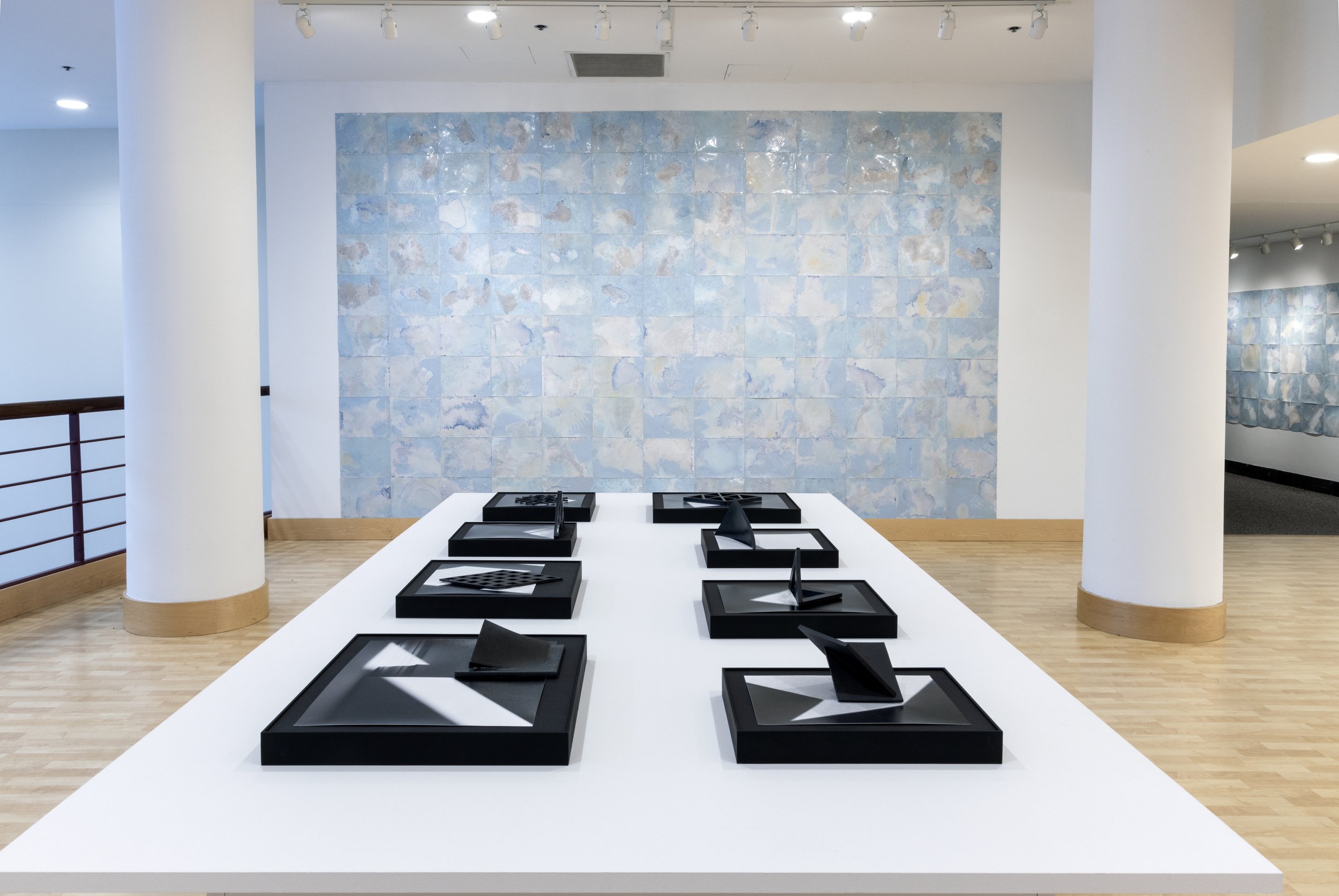
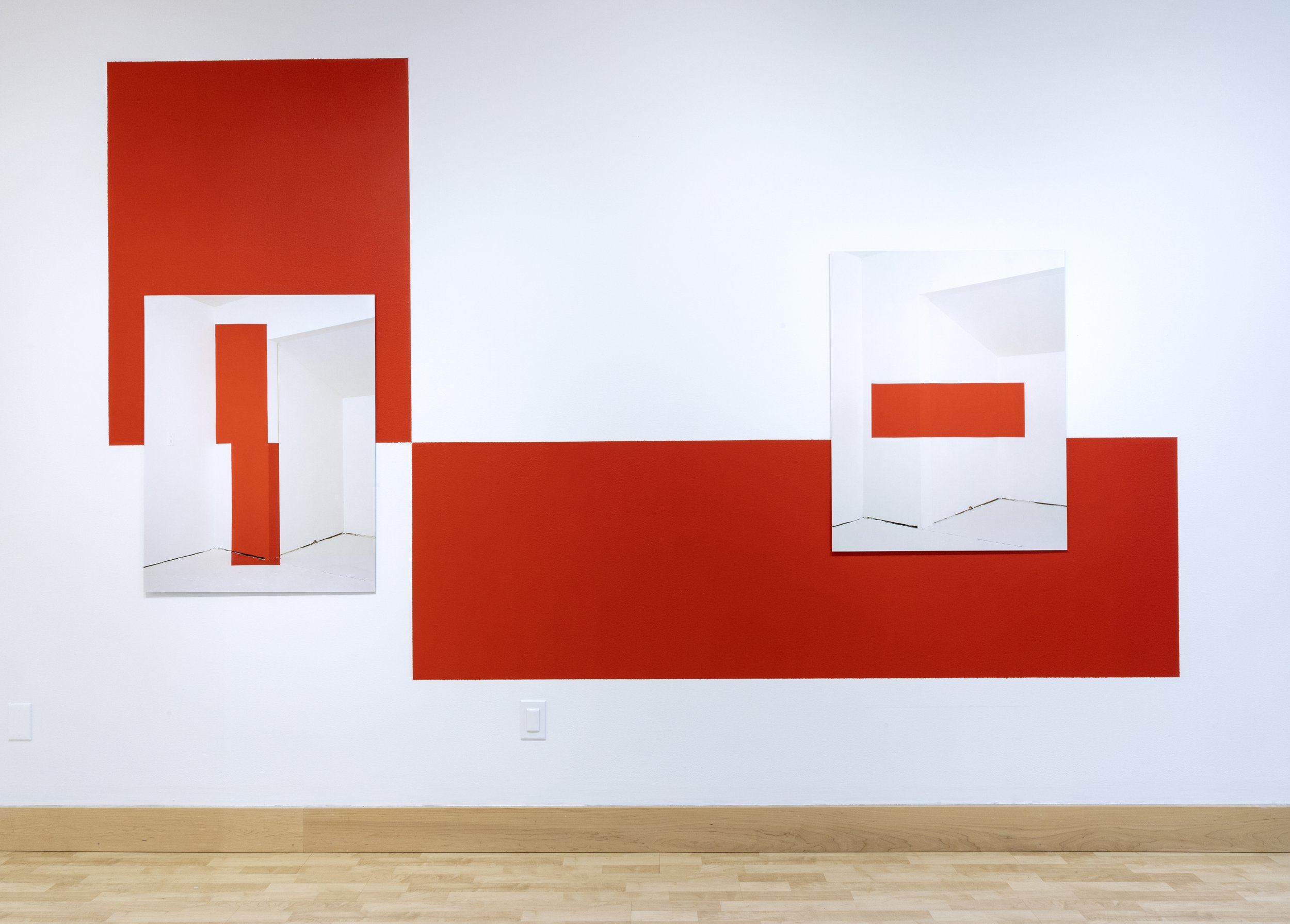
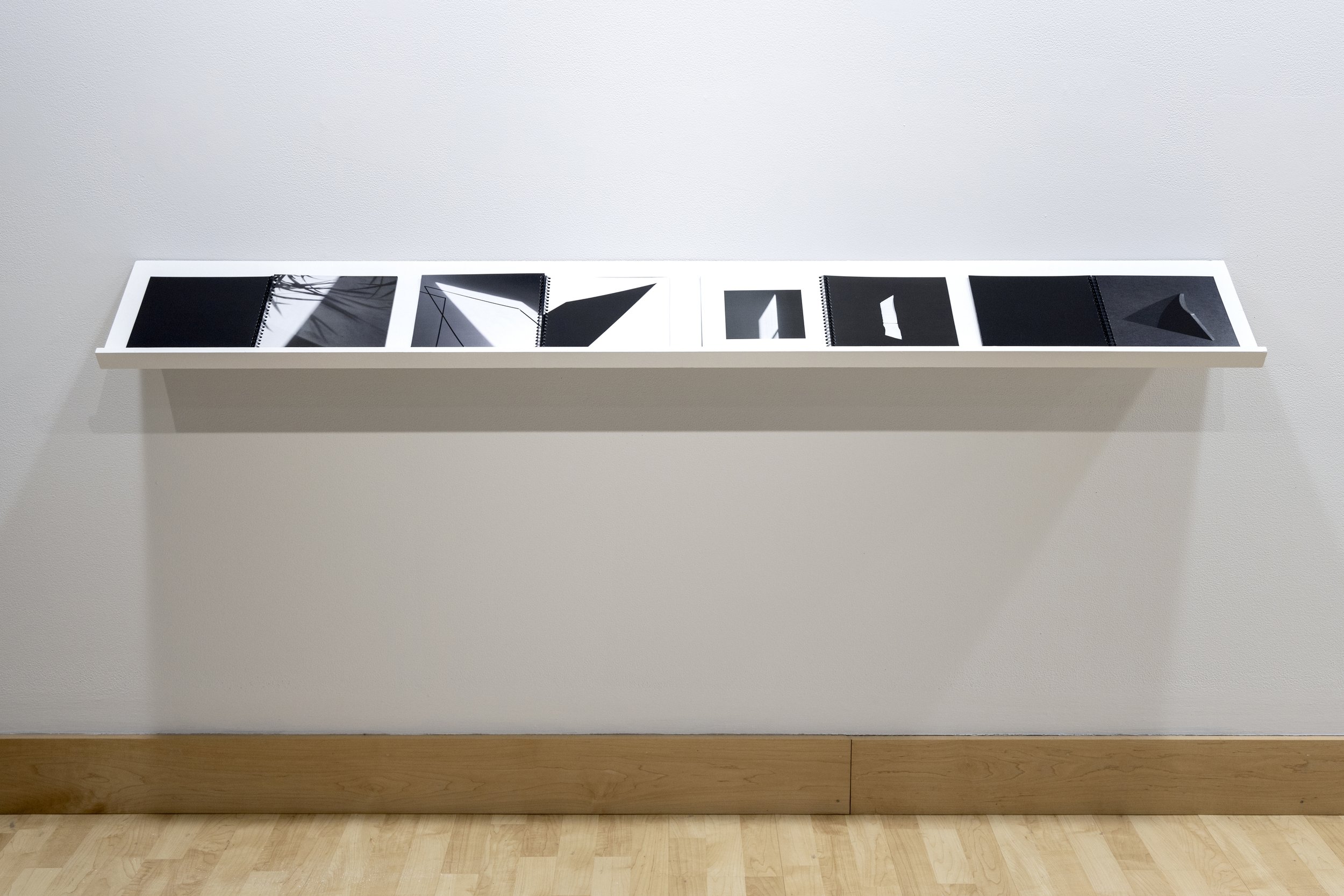
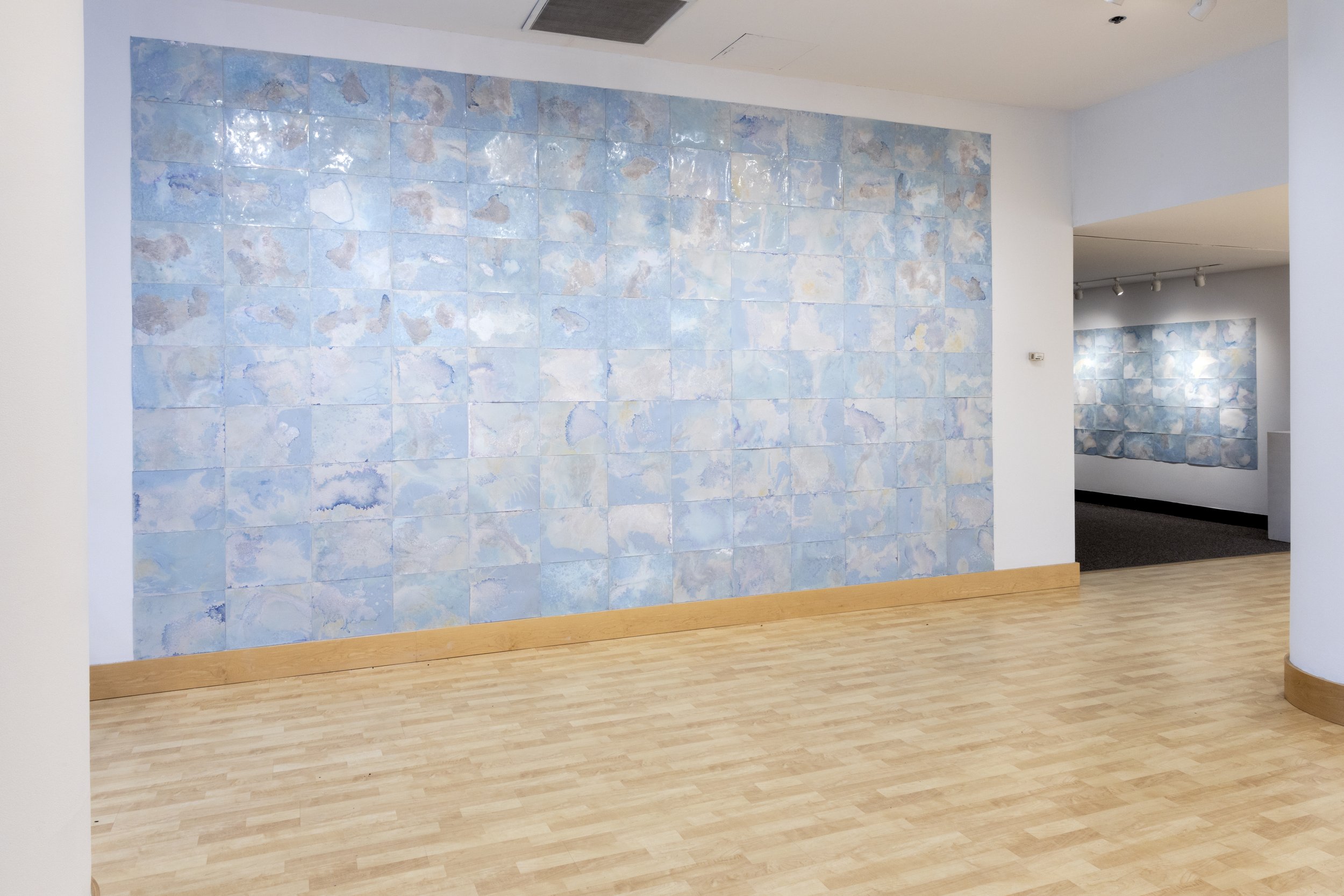

The exhibition Surface Tension, at Bethel University’s Olson Gallery, brings together the work of four artists working with photography: Sophia Chai, Paula McCartney, Christine Nguyen and Letha Wilson. In The Nature of Photographs, photographer Stephen Shore, works to define the essential characteristics of a photograph in terms of its physicality, its depictive nature and its behavior in the mind of the viewer. The foundation of these qualities is built with the print’s material aspects, its temporal arrest of a scene and the chemical processes that allow it to hold an image. One of Shore’s base attributes of the photograph’s materiality is its flatness. Photographs are flat. Nothing in Surface Tension is flat. Yet, this is still an exhibition of photography – one that examines these fundamental aspects of the medium by pushing beyond the physical constraints of the photographic print.
Sophia Chai’s site-specific Construct, R shifts the idea of flatness back and forth across the surface of the photograph. Chai paints architectural surfaces in her studio in bright red, immediately establishing a distinct contrast to white walls and floor. The shape of these red forms is created specifically for the perspective of the camera. The singular monocular viewpoint of the machine’s mechanical eye understands these shapes, painted on multiple surfaces, as regular rectangular geometric forms. In real life, the shapes are much more complex, but once seen by the camera they transmute into flat geometries that, while truthfully embedded in the depicted scene, now sit on the surface of the print. Only the imperfections of the architectural space disrupt this perfect planar geometry, which mathematically should have no depth at all, and allow us to enter back into the space of the photograph. The surface of the print simultaneously welcomes and resists the viewer. Chai complicates this perceptual experience again by placing the prints onto red rectangular forms painted onto the gallery walls that align with the rectangles of the print, pushing the viewer’s physical space into that of the photograph. The space of the print and the architecture of the gallery are fused together. The gallery is flattened into the surface of the photograph and Chai’s studio walls penetrate into those of the gallery.
As Chai’s work extends the space of the photograph, Paula McCartney’s four volume book, What Doesn’t Kill You Will Likely Try Again, stretches the time of the photograph. Black and white photographs in the book record fleeting moments of light and shadow moving along McCartney’s studio walls and floor. As the volumes progress, these shapes are set alongside similar forms made from cut pages of the book and juxtapositions with ceramic shards and sculptures. The beauty of these moments is preserved in the still time of the photographs – an essential quality of the medium – but, McCartney resumes the flow of time by binding the photographs together into books. As the pages turn, the light flickers and shadows shift, animating the experience of the transitory moments. While the book extends the temporal surface of the photo, her table works, Acquaintances, extend the space, by appearing to pull the subject of the photograph out of the flat plane. These pieces consist of a black ceramic sculpture on a black and white photograph of geometric light and shadow supported by a wooden base. The ceramics sit in direct alignment with the lines in the photographs. Often the object feels as if it has been extruded from the plane of the photograph and is dividing light and casting shadows on the image. Yet, the implication that it is responsible for what is in the print proves to be impossible upon closer inspection. This kinship between the ceramics and their impossible projections of light pushes the object into the space of the photograph, but then pushes it back out again – locking them into an unattainable synthesis. The ceramic accords with the forms of the photograph and the surface of the print materializes an irreconcilable sculptural origin.
Time, Space, Micro and Macrocosms by Christine Nguyen is an installation of color photographic paper on two different walls in the gallery, one that will experience significant sunlight and another that will only get artificial and indirect light during the exhibition. The pale cerulean of the paper will change to brown under the exposure of the sun, thus the two walls should transform at different rates. The individual sheets compose large murals that suggest a vast, watery, cosmic field in both imagery and scale. The forms that create the celestial-like images are not embedded into the flat surface of the emulsion, rather they are growing on its surface. Sprays of stars drifting alone in space and clustered together in unknown constellations emerge from the print amidst shifting fields of color, like brand new images from the James Webb Space Telescope. Or, as the title suggests, a possible inversion toward the microscopic universe held inside a drop of water. Salt, Epsom salt and borax applied to the print are growing salt crystals on and consuming the surface of the paper. A new world is building itself through chemical processes adjacent to those that were developed for the material processing of traditional photographic prints. Colors change in the emulsion of the photosensitive paper in response to the light of our closest star, coming in through the windows of the gallery. In rising off the surface, the crystal stars defy the two-dimensionality of photography by developing a three-dimensional image, trading illusionist space for encrusted terrain. In color darkroom chemical processing, bleach fix, a combination of ammonium thiosulfate salt and an aminopolycarboxylic acid, is used to stabilize the print and fix the image in place, but the salts applied to Time, Space, Micro and Macrocosms are keeping the work in flux, so that the sky one sees in it is never the same sky twice. That hallucination of starlight traversing the universe slowly shifts just as the night sky dims imperceptibly each night as stars advance toward their death, but brightens in places as new stars are born. This work breaks free of the photographic arrest of time by never moving into that final fixed state. The chemical processes themselves are building the photograph and the development of the work is constantly destroying the image.
The destruction of the print in the construction of the work is integral to what happens in the works by Letha Wilson. The exhibition includes three Concrete Bend pieces. Chromogenic prints of beautiful natural landscapes – lush jungles of Kauai, multi-colored canyons of Utah, forests of Hudson Valley Washington – are warped and deformed in their metal frame where they have been sealed in with concrete and the occasional steel band. The concrete becomes a smooth surface with edges oozing around exposed sections of the photograph, sometimes abrading the surface to expose layers of emulsion, while the normally flat surface of the photo becomes an undulating topography that suggests the depth and flow of the landscape that it depicts. Across the surface of the concrete, flush portions of the photo, and sometimes the frame, are bands of images made from emulsion transfer. These ribbons of sometimes psychedelically saturated color layer another more ghostly landscape into the mix. Representations of the natural and the built environment come together; construction materials of our paved world envelop the natural world of leaf and stone, but then that same organic force grows over the fabricated surface in an almost regular geometric fashion. Each material takes on aspects of the other through uneven edges or hard lines, flat surfaces or folding planes. The illusionistic space of the photograph becomes dimensional, mimicking the space of the depicted subject. This reconstitution of capaciousness is a feature made possible by the concrete holding the reanimated shape of the image in place, but also held flat and recompressed by the same photographic material. The foliage and rocks printed back on top of this combination emphasize the union and the tension of the shift between dimensionality and represented space, a tension that feels as complex as the one between the natural and the fabricated environment. The landscape is enveloped and hidden by the concrete and the concrete grants the landscape a new life.
The growing crystal powder on the surface of Nguyen’s work has a textural and chemical resonance with the earthiness of McCartney’s clay and glaze, both suggestive of the days of powdered chemistry mixes in the darkroom – like adding water to cement to construct Wilson’s prints, or the powdery edges of gypsum board visible at the seams of Chai’s walls. This attention to materiality and the way those physical elements can both ground the essential aspects of photography described by Shore - chemical materiality, flat depiction of space, and the pausing of the temporal world – are what make photography absolutely crucial to each of these artists’ work. At the same time, the way they each alchemically coax these materials out of the depicted world and back into the physical one to reassert dimensionality, suggests that photography’s key attributes may also be its limitations.